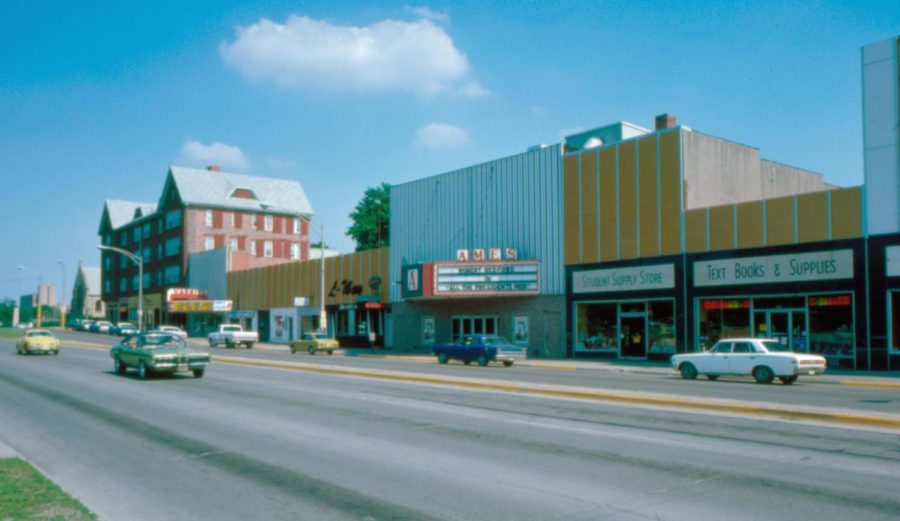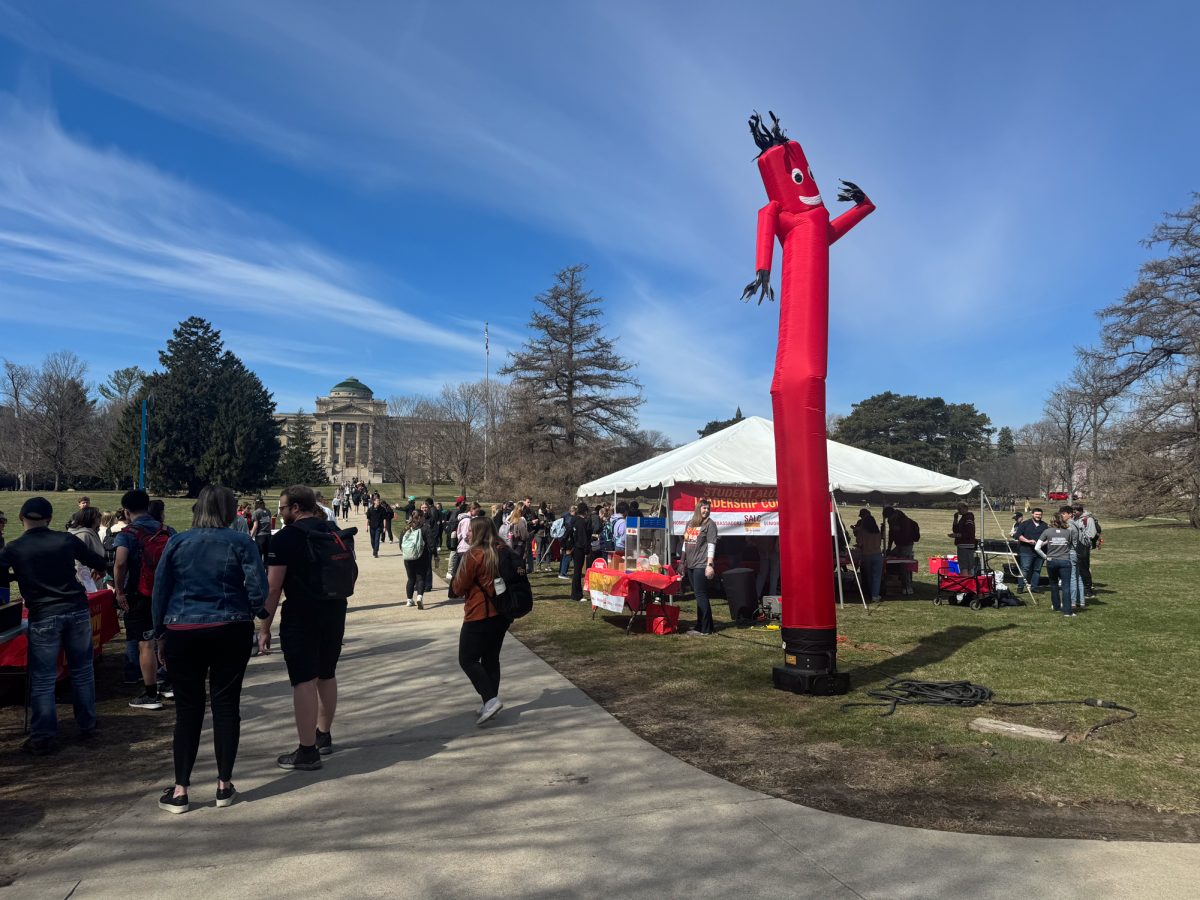Campustown’s history is rooted in the university
Courtesy of Ames Historical Society
Campustown in 1976.
March 11, 2015
Campustown has undergone multiple transformations since its beginnings in the early 1900s, and still plays a role in students’ lives more than 100 years later.
Campustown’s roots reach as far back as 1902.
Old Main, a building no longer on campus that sat where Beardshear sits now, suffered two fires: one in 1900 and one in 1902, said Alex Fejfar, project coordinator for the Ames Historical Society. Old Main was the building where students and faculty ate, slept and held class.
After the 1902 fire, which was so severe Old Main couldn’t be restored, boarding houses were built along what is now Welch Avenue, two of which still stand today.
One boarding house is tucked behind Jimmy John’s and the other boarding house is behind the Legacy parking lots, although they now serve as duplexes.
The first brick building built in Campustown was Charlie Yoke’s before construction started, located on the corner of Lincoln Way and Welch Avenue.
That building was built in 1908 by A.L. Champlin and essentially started the business district in Campustown.
The building served as a drugstore, a café, People’s Bar and Grill for over a decade, and Charlie Yoke’s said Fejfar.
Campustown remains unique in many aspects today.
“That’s pretty amazing and pretty great that we have such a diverse combination of people and things in the district: churches, shops, restaurants, now housing,” said Campustown Action Association Director Kim Hanna.
Another staple on Welch Avenue was the new Ames theatre, built in 1919 and where Kingland Systems was located before construction started.
The new Ames theatre was sort of a controversy when it first came to Ames because it seemed like a distraction to students.
The theatre was originally built for silent movies and Vaudeville and had a sloped floor like a theatre until Kingland Systems moved in and leveled the floor.
The basement included the orchestra pit and a furnace that heated the entire block. The furnace was about ten feet tall and Champlin used the furnace for steam heat to heat the building.
Campustown received its name in the 20s, but before that was named Champlinville because A.L. Champlin built everything on the block.
A.L. Champlin was a businessman and the main proponent in getting Campustown started.
In the early 1900s there was debate about starting Campustown by West Street because it was swampy by Welch Avenue.
However, the routing of Lincoln Way, combined with Champlin’s buildings, established the Campustown we know today.
The Ames Historical Society gathered a collection of items from the buildings undergoing construction before they were demolished.
The items include a name block, an older light switch, part of a fire suppression system and some tile.
These items and others were on display on the Fourth of July when construction first started and will be on display again this coming summer.
Campustown construction will be concluded around the end of 2015 and will provide a new chapter for that section of the city.
Students Courtney Roerich and Madison Egli say they like the camaraderie of Campustown.
“Especially on the weekends it’s the place to go,” said Egli.
After construction, there will be a blend of what old Campustown was like and some new changes that reconstruction will bring.
“The housing has always been a part of Campustown, because originally there were houses along Lincoln Way and then they slowly tore those down to make space for retail, so now you are sort of seeing some of that full circle but now were having retail and housing together,” said Hanna.







